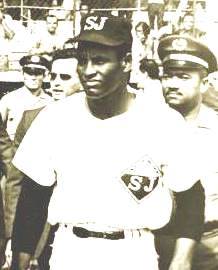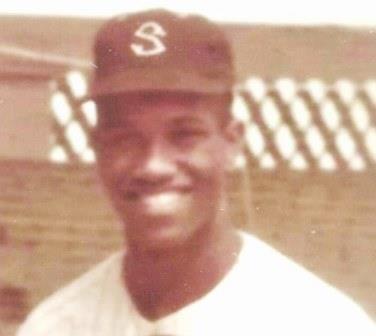
Roberto Clemente 
Juan Veintidós 
Jon Matlack
Most fans have Roberto Clemente’s 3,000th MLB hit etched in their memory.
But when was his last hit in Puerto Rico’s Winter League? Let’s go back to the 1970-71 season. Roberto signed a contract to manage the San Juan Senators. On December 21, 1970—during the Christmas dinner at a [San Juan] Metropolitan Area restaurant sponsored by the Puerto Rico Professional Baseball League—it was announced that the San Juan Senators activated Roberto Clemente and he soon would take the field to help his team. A league trade was mentioned during this dinner. Mayagüez and Caguas had made a trade: the [Mayagüez] Indians obtained Rusty Torres, Neftalí Mora and Juan Veintidós in exchange for Ramón «Mon» Hernández and Ángel Luis Alcaraz. The date of these announcements caught my attention. The [number] 21 followed Roberto.
Clemente was notified the next day by League President, Guigo Otero Suro, Esq., that he was suspended for seven days due to an on-field incident between him (Clemente) and umpire John Ross in the December 19, 1970 game versus the arch-rival Santurce Crabbers. This delayed Clemente being activated. Veteran coach Nino Escalera would be the club’s interim manager.
Clemente made his debut on January 12, 1971, against Santurce, after his suspensión was lifted. He was retired as a pinch-hitter. On January 16, the Senators faced the Indians, and Clemente wrote his name in the line-up, hitting fith. The RHP Juan Veintidós was the opposing starter.
Veintidós, the six-foot, 180-pound native of Cayey, Puerto Rico, was signed by Nino Escalera for the New York Mets at age 17. He had pitched in the 1970 Instructional League. Prior to that, he saw action with Pompano Beach of the Class A Florida State League. He was 12-11 with a 2.44 ERA; had 134 strikeouts; and walked 88 in 134 IP. Per Héctor Valle, his Mayagüez catcher, Veintidós was «very effective, had a lot of courage, and threw many strikes. His repertoire consisted of a fastball, curve and change-up. He was a hurler with good control.”
Line-ups were announced via the customary loudspeakers. Veintidós would have the opportunity to face the best Latin American/Caribbean player of the moment. The young hurler saw Roberto approach the batter’s box, after doing his accustomed head movements. Roberto got comfortable on the outer part of the batter’s box, as was his habit, and there was Veintidós looking at Clemente. A lot went through the pitcher’s mind. “I recall it was a Saturday afternoon at Hiram Bithorn Stadium,” said Veintidós. “The first time facing a hitter of Roberto’s caliber—one of my idols—is something one never forgets. I wanted to pitch well and get him out.”
Veintidós handled Clemente in his first at-bat. Clemente then made his second plate appearance in the home fourth inning. Veintidós, who had an air of confidence after having dominated Clemente in his prior at-bat, committed a mistake. “I threw him a fastball,” recalled Veintidós. “He hit a speeding bullet that went past Chito Ríos, our third baseman, and reached second.”
This was Clemente’s last regular season hit in Puerto Rico, number 621 (21 repeating itself). I was curious to see how Veintidós would feel in learning about this historic and unpublished [until now] ítem. When I posed this question, there was a brief silence, like a fraction of a second, followed by a sincere reply: “I did not know this was Clemente’s last [regular season] hit in Puerto Rico,” affirmed Veintidós. “It caught me by surprise. It is a privilege for me.”
Twenty months later, September 30, 1972, Clemente connected his 3,000th and final MLB hit off Jon Matlack. And to follow up on the historical parallels, it was also a double, and Veintidós—as well as Matlack—were with the New York Mets organization.
*Thanks to Juan Veintidós and Héctor Valle for their time and insights in our interviews. Ditto for Héctor Marrero and Héctor L. Ortiz, who put me in touch with Juan Veintidós.
*Juan Veintidós photo courtesy of Héctor Marrero.
*Special thanks to author and historian, Tom Van Hyning, for his assistance.

